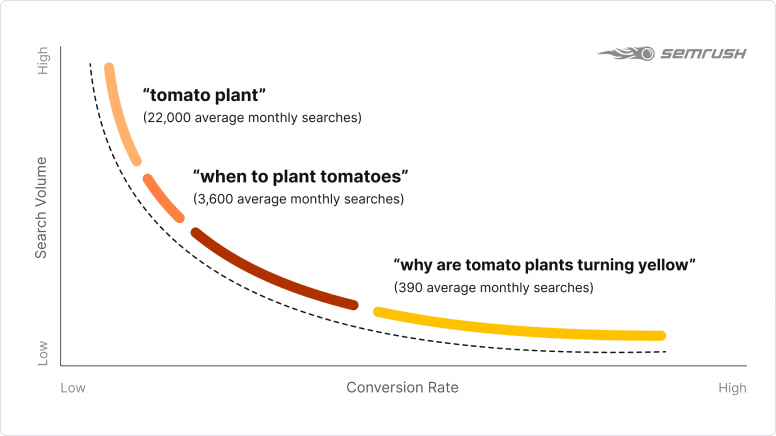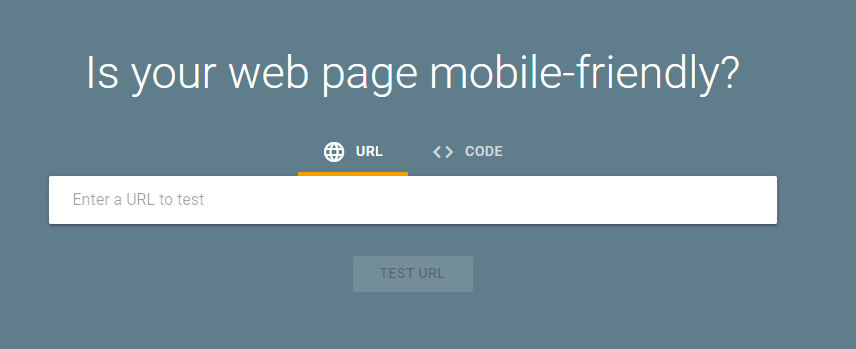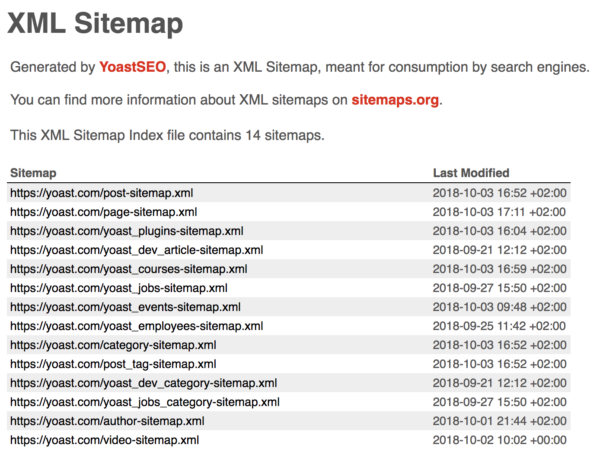Table of Contents
The Google search algorithm updates hundreds of times per year. In fact, it updates so often that there is a “Google Algorithm Update History” which tracks news, releases, and information related to these changes.
Unfortunately, most businesses don’t have the time to keep up with these changes to satisfy every little aspect of Google’s ranking factors. To be effective with search engine optimization (SEO), you have to focus on the tactics that move the needle most. And to know what those are, you have to understand the most important Google ranking factors today.
Top Google SEO ranking factors for 2021
It’s estimated that there are hundreds or even thousands of Google ranking factors, but not all of them are created equal. And unlike Bing which publishes clear SEO guidelines, Google is more secretive about its algorithm.
Rather than spending your time trying to nail each individual SEO technique, focus on the most effective optimization practices. Below are the top Google SEO ranking factors that you should pay attention to in 2021.
Backlinks
When another website (a referring domain) posts a link to your web page, it is called a “backlink.” Backlinks are often considered the number one most important ranking factor in the SEO industry. This is because they show the search engine that other websites find your content to be relevant and high-quality enough to share.
Research has shown that pages with referring domains have a higher amount of expected traffic:
 Having a solid link-building strategy is a key component of your overall SEO approach. Here are some of the best ways to generate high-quality backlinks from other content creators:
Having a solid link-building strategy is a key component of your overall SEO approach. Here are some of the best ways to generate high-quality backlinks from other content creators:
- Create infographics that others will want to share on social media or their blog.
- Seek out opportunities to publish guest posts on other websites.
- Conduct industry-leading research.
- Collect and distribute important data on your focus topics.
- Use a mixture of written and visual content in your web pages.
- Develop comprehensive guides for users.
Overall, you want to generate backlinks from high-quality websites that are also relevant to your field. This shows crawlers that you are a trusted source of information in the industry.
Content quality, freshness, and relevance
On-page SEO makes up the bulk of all SEO techniques because it involves the optimization of the content and details that users can see on your website. A search engine’s only goal is to serve users web pages that provide the information, products, and/or services that they want and need.
When it comes to content marketing, you need to develop resources that display the right information in an optimal format. This means that if you’re creating a fall fashion guide, for example, you’ll provide images and include current clothing styles.
Ultimately, you want to find a combination of style and substance that serves users and also appeals to search engine crawlers. If you find a way to develop your own brand identity with each web page you publish, you can also strengthen your brand awareness.
Keywords
The foundation of great content is keyword research. Search engines need to have a clear idea of your target keywords and shouldn’t have to guess at the main topic of your content. Shorter keywords are searched for more often, but they’re also more competitive to rank for.
Long-tail keywords offer an excellent opportunity for ranking higher. This is because Google’s algorithm is capable of understanding complex user queries.
These types of search terms often have a smaller search volume but can be more effective. This example from Semrush demonstrates how long-tail keywords may have fewer views but may be better at converting users:

This is especially useful for local SEO strategies which emphasize finding niche target audiences within less competitive areas of Google. You want to make sure to avoid keyword stuffing your content, as this can negatively impact your content’s quality and subsequent ranking.
Consider using the Google Keyword Planner or the Ahrefs Keyword Generator to conduct your keyword research. These research tools will save you time by finding options faster than any do-it-yourself brainstorm session. Plus, their recommendations will be based on real-life search patterns and data.
Search intent
Users have four different motivations for making searches. These motivations are called search intent, and they’re very important to understand if you want to move up in the results pages.
The four types of user search intent are:

For each search term that you target, you need to determine the user intent behind it. This is because Google can determine what kind of content users want to see through testing.
That means if you see “how to” articles on page one of Google search engine results for a particular term, it means the search intent is likely informational. If you see product pages ranking on page one, it means most searchers are looking to buy something when they type in this particular search term.
As a creator, your job is to develop content of the right type, in the best format, from the correct angle. Using the above example, let’s consider the search intent behind “how to write a great article.”
Since this search term has informational intent, you would likely brainstorm this approach:
1.) Type: Informational
2.) Format: Full-length, step-by-step guide
3.) Angle: Friendly, helpful tone with detailed explanations
If you consider search intent before you begin creating content, you will automatically make your web page more valuable to users, increasing its potential rank in the organic search results. Remember, anything you can do to help users will make you more credible to Google crawlers.
Comprehensiveness
Whether you hire an SEO agency or implement a DIY SEO strategy, you need to produce comprehensive content. Users should leave your web page with their question answered or a concrete idea of where to go next in their search.
Comprehensive SEO content comes in many forms and often depends on the type of resource you’re creating. For ecommerce sites, this looks like product pages with prices, descriptions, images, and shipping/returns information. On the other hand, comprehensive blogging content may simply look like a full discussion of the topic with helpful visuals. If a user is searching for “SEO definition,” a comprehensive piece of content could constitute a simple short definition from a glossary.
“Comprehensive” doesn’t necessarily mean “long.” It simply means you are answering the user’s query in the most complete way possible.
Recency
Search engines need to publish relevant information which often means recent information. Many industries are subjected to constant change, requiring frequently updated content.
Although some SEO experts advise against dating content, including the publishing date doesn’t always have a negative impact on your rankings. For example, consider this search for “how cold is the moon:”
 Three of the top-ranking results are between 4 and 6 years old. Because data on the moon’s temperature rarely updates, the content remains relevant after many years.
Three of the top-ranking results are between 4 and 6 years old. Because data on the moon’s temperature rarely updates, the content remains relevant after many years.
You want to make sure that you either produce evergreen content that won’t be affected by industry changes, or that you regularly update the content that needs to be updated to stay relevant. The search engine will always choose the content that is the most relevant, so you have to keep up with developments in your industry.
Readability
In the past, people used keyword stuffing tactics to trick Google into boosting their rankings. Today, white hat SEO tips dominate the industry.
As the algorithm has learned more about human speech, the overuse of keywords has negatively impacted many websites’ organic traffic. The year-over-year growth of voice search means that Google simply wants content that reflects human conversation patterns.
 Here are some of the writing elements that improve readability:
Here are some of the writing elements that improve readability:
- Simple sentence structure
- Synonyms for overused words
- Active voice
- Tone that matches audience
- Thoughtful idea organization
Incorporating some or all of these elements will help show Google that your content will be easily understandable and accessible to a wider demographic of users.
Mobile-friendliness
Google now follows a mobile-first indexing process. This means that mobile versions of web pages are more important than desktop versions. Crawlers index the content on your mobile site and display it in the SERPs, even if the search is conducted on desktop.
As of early 2021, more than half of all web page views come from mobile devices, and that number is expected to grow. This will only increase the importance of making your website mobile-friendly.
Google wants websites to implement mobile SEO techniques so that searchers can have a great experience no matter what device they’re using. That’s why Google created the Mobile-Friendly Test to help marketers ensure the functionality of their web design:
 The earlier you can optimize your mobile site, the better. Not only will it improve user experience, but it will also set you up for long-term success as mobile search volume increases.
The earlier you can optimize your mobile site, the better. Not only will it improve user experience, but it will also set you up for long-term success as mobile search volume increases.
Page Speed
Think about your own searching habits. Do you wait around very long for slow websites to load? If the answer is no, you are like most users. Search engines want to provide high-quality content that users can access nearly instantly which is why they put so much emphasis on page loading time.
Unfortunately, many websites are not loading fast enough for Google’s recommendations.

When users come to your site and have to wait for the homepage to load, they’re likely to leave and find another resource. This defeats the whole purpose of your SEO strategy. After all, what’s the point of ranking highly if no one sticks around to see what you have to offer? Over time this will demonstrate a poor user experience and drop your ranking in the SERPs.
Google started using mobile page speed as a ranking factor in 2017 and it now offers PageSpeed Insights as a resource for addressing this area of optimization. Take advantage of this free tool and make sure that you’re providing the fastest page loading time that you possibly can.
Security
Search engines need to provide a safe experience for their users, just like any traditional business owner would want to protect his/her customers. Google touts security as one of its top priorities, and it now displays warnings for sites that may not be secure.
One of the biggest ways to ensure user security while also improving your SEO is to switch to HTTPS encryption.
 Installing an SSL certificate to provide this encryption will not only safeguard your visitors’ data, but it will also make you more credible to the search engine.
Installing an SSL certificate to provide this encryption will not only safeguard your visitors’ data, but it will also make you more credible to the search engine.
User experience
With the rise of mobile search and shortening of the average attention span, user experience (UX) has become more important than ever. In fact, there is an entire UX design industry centered around finding ways to make the online landscape more enticing and functional.
When it comes to SEO, there are many factors that contribute to a positive user experience. You can enhance the look of your website by:
- Building an intuitive site structure
- Developing SEO-friendly URLs
- Creating comprehensive and engaging content
- Using a multimedia layout that caters to different learning styles
- Limiting pop-up ads
- Writing descriptive title tags and meta descriptions
When you design pages and develop content, you should consider how the two elements complement one another. For example, if you’re writing a step-by-step guide for how to change a tire, you would want to organize it in easily digestible sections and include pictures.
Imagine that someone wants to learn how to change a tire and they find a page with long paragraphs and no visuals to use as a reference. They’d probably leave the page and find a different resource. These small considerations play a major role in your performance on important SEO metrics like dwell time and bounce rate.
Crawlability
Google needs to find your website in order to crawl and index its content. This ranking factor is called “crawlability,” and without optimizing for it, you’ll never make it onto the first results page.
Improving crawlability takes several technical SEO tools and tactics. These are some of the most important ones you should use for your web pages.
XML Sitemap
An XML sitemap is a roadmap of your website. It tells the search engine where everything is located and how to find it. All you have to do is create an XML sitemap and then submit it to Google for reference. Once you do that, Google will have an easier time understanding your site structure and finding new web pages to index.

Creating a sitemap is relatively straightforward, and there are several WordPress SEO plugins you can use to automate the process.
Robots.txt file
There are certain situations where you want to limit crawlability. For example, if you have web pages that aren’t fully optimized but on your site, you’d want to make sure that Google doesn’t try to index them. In these cases, you’d want to have a robots.txt file that tells Google which pages on your site are fair game for crawling and which pages aren’t.
Unfinished, duplicate, or irrelevant content sitting on your website can negatively impact the performance of your SEO campaign, so you should use a robots.txt file to dictate what crawlers can and can’t index.
Canonical tags
There are many reasons why you might have duplicate content on your website. What’s important is that one of the URLs is designated as the “most important” version of a web page. To designate this most important version, use a canonical HTML tag in the header of your source code.
A canonical tag looks something like this:
<link rel=”canonical” href=”https://examplewebpage.com” />
If a crawler shows up to a duplicated page and sees this tag, it will know which content is the original, and it will index that. This will prevent duplicate pages from sabotaging each others’ rankings.
Schema markup
Most SEO guides suggest the use of schema markup on web pages in order to improve their SERP positions. Schema markup refers to the code that describes your content in further detail. It helps Google understand what certain information on your web page means, and it can generate rich snippets like these:

You want rich snippets for your SERP listings because they are more enticing to users and can increase your click-through rate (CTR). With schema markup, you’re telling Google what things like customer reviews, event dates, and authors are within the content. This gives the crawlers more information that it can use to show users, increasing your potential ranking.
Image alt text
Any solid digital marketing strategy ensures accessibility to all potential customers. To cater to visually impaired users while helping crawlers understand your visual content, add alt text to your images.
Alt text is code that explains the content and purpose of an image. Screen readers for visuallyimpaired users read the alt text whenever they come across an image. Moz gives a great example of how to write image alt text:

Since crawlers don’t have the human ability to see an image and interpret its meaning, alt text tells them the answer. This gives them an overall better understanding of your content which can lead to a better SERP position.
Google Search Console
Google wants to encourage business owners to provide the very best content possible. This is why it provides a Google Search Console profile for every website.

This tool gives you all sorts of great data points that you can use to enhance your web pages. You can do things like:
- Track ranking positions.
- View the strength of your internal links.
- Monitor the crawling and indexing progress on web pages.
- Upload XML sitemaps.
You can also use the “Landing Pages” tab to monitor the status of each published page. It allows you to investigate why a page might be dropping in the rankings. And you can integrate your profile with Google Analytics in order to have a full view of your SEO performance.
If you want help understanding this platform, you can check out the Google Search Central YouTube channel. It gives information on how to use Google tools and explains important ranking factors and SEO practices, as well.
Get a complimentary SEO audit
It’s important to keep up with major algorithm updates so that you can adjust your SEO strategy as needed. For your sanity, however, it is not necessary to change your website every single time you see an announcement.
Focusing on these top-priority ranking factors will keep your web traffic moving in the right direction without sacrificing all of your time. When it comes to the smaller, less-impactful ranking factors, your approach doesn’t always have to be perfect, it just has to get done. This mindset will help you devote your efforts to perfecting the areas of optimization that will actually have a major influence on your rankings.
Want to see how you’re doing with SEO? Get an instant SEO audit below. Or, schedule a free consultation to see how intent SEO can boost search traffic revenue by 700%.
